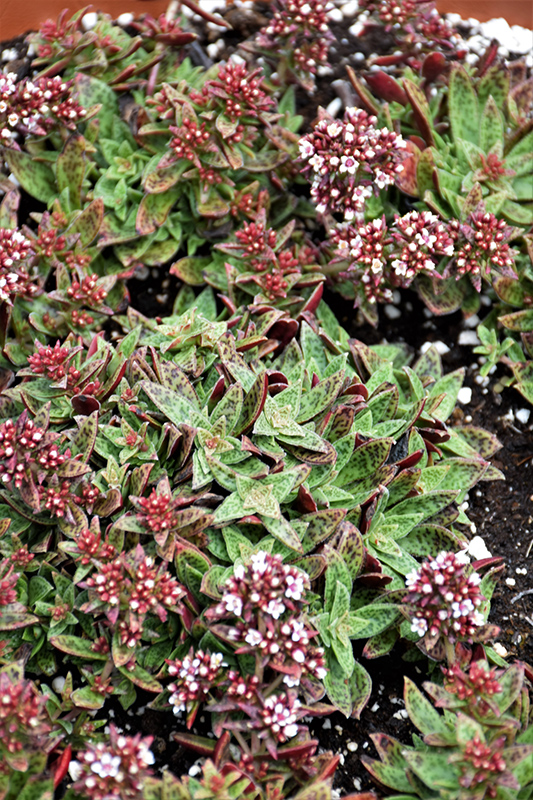Know Before You Go!
Get notified before our plants arrive in stores near you.
Plant Care Library
Height: 2 inches
Spread: 8 inches
Sunlight:
![]()
![]()
Description:
An extremely attractive and eye catching succulent that produces rosettes of dark green, triangular leaves with black spots and burgundy-purple undersides; low growing with a compact habit, ideal for containers, rock gardens and hanging baskets
Features & Attributes
Tiger Jade features delicate clusters of white star-shaped flowers with shell pink overtones at the ends of the stems in early summer, which emerge from distinctive dark red flower buds. Its attractive succulent pointy leaves remain dark green in color with distinctive black spots and tinges of burgundy throughout the year.
This is an herbaceous houseplant with a more or less rounded form. This plant may benefit from an occasional pruning to look its best.
Planting & Growing
When grown indoors, Tiger Jade can be expected to grow to be only 2 inches tall at maturity, with a spread of 8 inches. It grows at a slow rate, and under ideal conditions can be expected to live for approximately 15 years. This houseplant will do well in a location that gets either direct or indirect sunlight, although it will usually require a more brightly-lit environment than what artificial indoor lighting alone can provide. It prefers dry to average moisture levels with very well-drained soil, and may die if left in standing water for any length of time. This plant should be watered when the surface of the soil gets dry, and will need watering approximately once each week. Be aware that your particular watering schedule may vary depending on its location in the room, the pot size, plant size and other conditions; if in doubt, ask one of our experts in the store for advice. It is not particular as to soil type or pH; an average potting soil should work just fine. Be warned that parts of this plant are known to be toxic to humans and animals, so special care should be exercised if growing it around children and pets.
There are many factors that will affect the ultimate height, spread and overall performance of a plant when grown indoors; among them, the size of the pot it's growing in, the amount of light it receives, watering frequency, the pruning regimen and repotting schedule. Use the information described here as a guideline only; individual performance can and will vary. Please contact the store to speak with one of our experts if you are interested in further details concerning recommendations on pot size, watering, pruning, repotting, etc.
-- THIS IS A HOUSEPLANT AND IS NOT MEANT TO SURVIVE THE WINTER OUTDOORS IN OUR CLIMATE --
A NetPS Plant Finder tool

